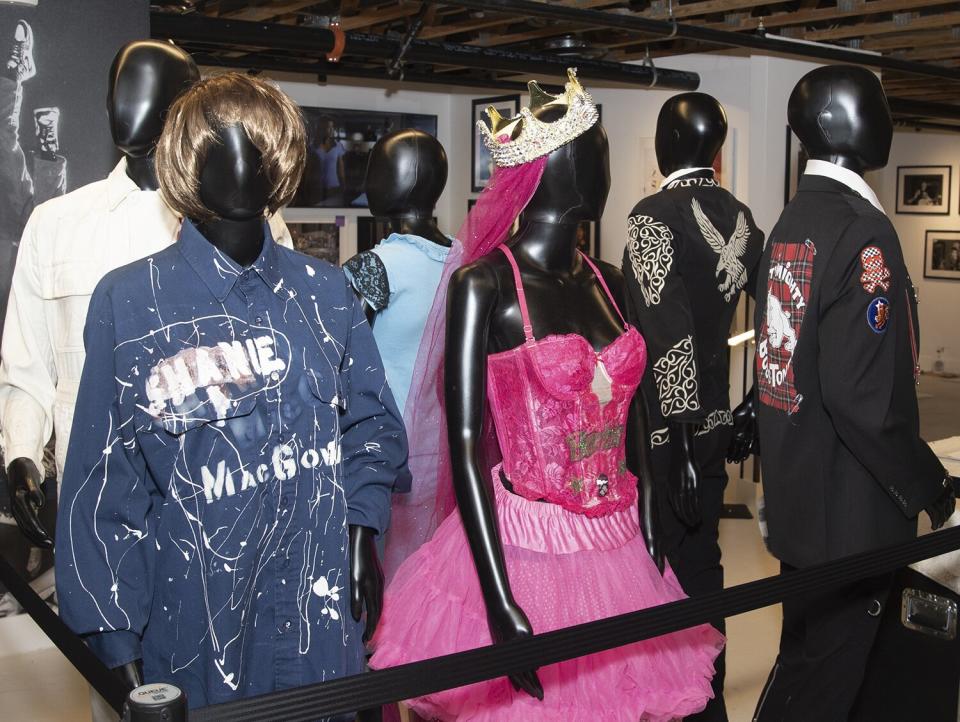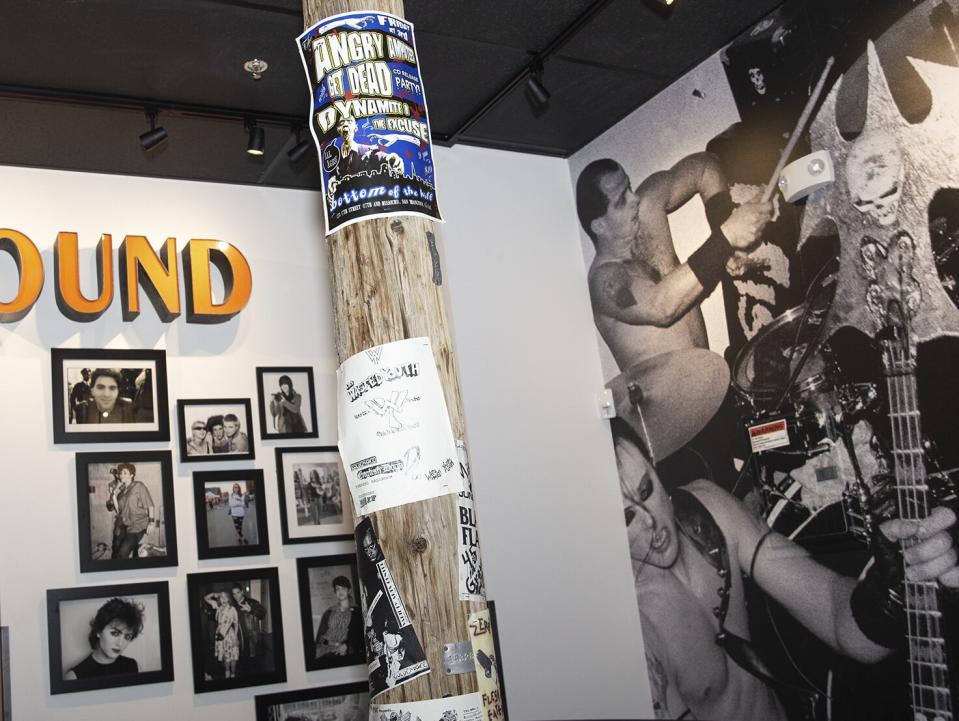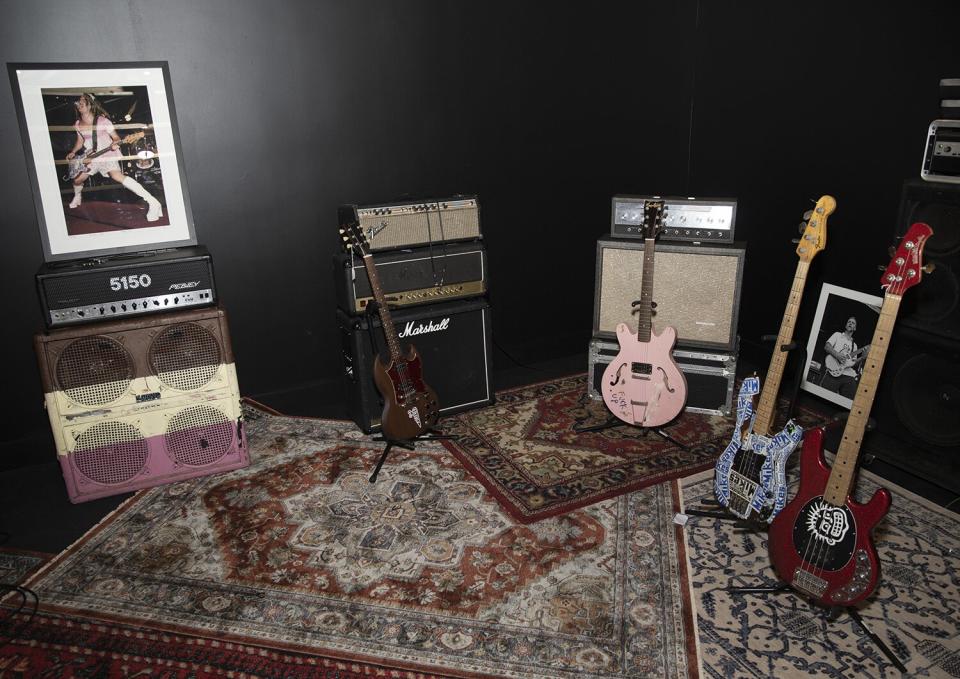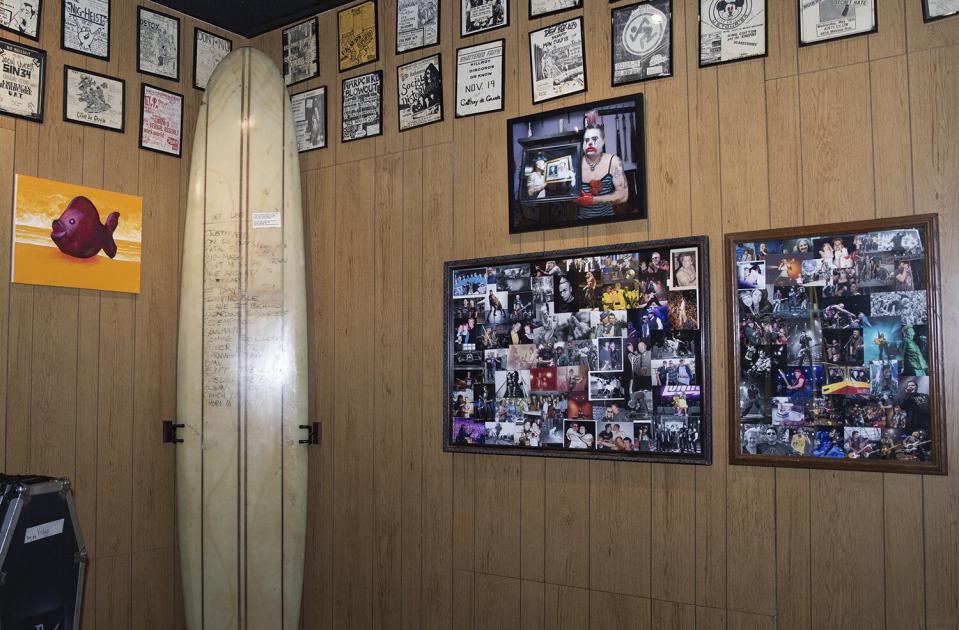NOFX's Fat Mike gives us a sneak peek at the new Punk Rock Museum in Las Vegas
- Oops!Something went wrong.Please try again later.
Have you ever wanted a glimpse into the defiant bygone era of punk your parents warned you about? Or to shred on your favorite rocker's guitar? To revisit some of the biggest punk shows ever?
Well, never mind the bollocks, because Las Vegas has added another impressive attraction to its already endless strip of them: the brand-new Punk Rock Museum, which opened this week.
During the pandemic, Mike "Fat Mike" Burkett of the punk band NOFX was at a crossroads. Living in Vegas at the time, he wasn't sure what to do for his next project and had been contemplating opening a shop for punks. After enlisting the help of veteran Warped Tour producer Lisa Brownlee, he pivoted from that idea to presenting a menagerie of hard-edged memorabilia in a full-fledged museum.
Artists, fans, and collectors from all over the world have shared pieces of their history to create a living, breathing space for diehards to revisit their unruly days, relive their wild nights, and even, uh, get married. From guided tours, to a jam room where they can play the actual instruments of legends, to a wedding chapel, the Punk Rock Museum offers a little something for every kind of rebel, young and old.
Fat Mike met up with EW to give us an inside look at the museum and discuss how he assembled its badass selection.

Ben Trivett Mike 'Fat Mike' Burkett at the Punk Rock Museum in Las Vegas
ENTERTAINMENT WEEKLY: After all your years of performing and being involved in the punk scene, had you ever thought about having this all-in-one collection in a museum like this?
FAT MIKE: Never. I wanted to open a punk shop in Vegas, because storefront property was cheap because of COVID, and I had a marijuana store here once. I called Lisa Brownlee, who was a production manager on the Warped Tour for 20 years, and said, "Do you want to do this punk shop with me? Run it?" She's like, "Sure." She called back the next day and said, "Maybe we should get some artifacts for the shop, so people can see some old cool s---."
I found this 4,000-square-foot antique store right next to the strip club Little Darlings, which is even cooler, because we couldn't be on the Strip. We have to be next to the strip club and next to the freeway because punk rock, we're satellite — we don't belong in the music industry. They don't want us. There's no Billboard chart. There's no Grammy. Even though Green Day and Foo Fighters and Blink-182 won Grammys, they're all old punk rockers.
So my real job is to be the most inclusive museum, not to be the Rock and Roll Hall of Fame. Pat Smear — from the Germs, Nirvana, and Foo Fighters — was one of the first investors. He's like, "So what do you have to do to get in the museum?" I'm like, "Maybe you have to put out a seven-inch [record]." He said, "How about you have your name on a flyer?" I'm like, "That's good with me." He was so happy about it that he put a bunch of money in, and he'd never invested in anything before. He's the coolest person ever. My job is to get as many different bands in here as possible. I want someone who was in a band in Amarillo, Texas, in the '80s to come here and go, "Oh, my God. Our flyer's up there." That's what punk rock has always been: We'll let anybody into our world unless you're really annoying. Or a rock star. You can't act like a rock star, because then you get kicked out.

Ben Trivett Artifacts from the Punk Rock Museum in Las Vegas
How did it feel seeing all this history after all these years?
Every couple days, I have to go outside and cry because it's so emotional. The first NOFX interview from 1986, where some guy mailed questions to our guitar player's parents' house, and I hand-wrote the interview like, "Who is NOFX and how long have you been around?" I'm like, "Me, Mike" — before I was Fat Mike, I was 19 — "We've been around for three years." I'm so stoked I have that.
Not a lot of people could have opened this. I needed to get the best team, but I can call Roger [Miret] from Agnostic Front and Pat Smear. "Hey, Dropkicks, can you send us some bagpipes?" Everyone is so happy to be a part of it. We talked about having some corporations such as Vans to help us along, but I decided it's just going to be owned by punk bands because we built it. I've given shares of the company to the Partisans, Discharge, Symbol Six: "Really, you're going to give us shares? We had one record out in '82." "Yeah, you get to be part of it." In punk rock, it's a family, a community. Everyone knows each other from just playing together. It's not like metal. People are friendly. Everyone's invited.

Ben Trivett Inside the Punk Rock Museum
Did you get most of these items from artists?
It's crazy how we found these things. We didn't get most of our things from bands. I'd call bands and they'd be like, "Uh, well, we didn't really keep anything." It's from collectors. Henry Rollins' T-shirt that he threw out at his first Black Flag show — how do you know it's his T-shirt? Because his name is sewn in the back by his mom. We have Darby Crash's phone book because you had to keep a phone book in your back pocket [back then]. I turned to P and it says "Pat" for Pat Smear, and the top one says "Poser." Personal stuff like that.
My favorite thing is Pat Smear's first royalty check for $8.34 from Wet Records. We had the canceled check. Charlotte Caffey from the Go-Go's has one for $15 for their first seven-inch. We have the molds for the Devo domes, the wood molds — they're downstairs. How did we get this s---? There's nothing like this place.

Ben Trivett Guitars at the Punk Rock Museum
Do you think this museum will not only give fans and older generations a sense of nostalgia, but also pave a path for younger kids to explore this music and culture?
Absolutely. That's why I made sure this museum was five decades of punk. We have bands that started a few years ago in here because most punk-rock historians or museums that have popped up around the world, it's '70s — not even '80s, but early '80s and '70s. But this is everybody because I want to inspire kids who don't know how to play an instrument to play music, and this is the only kind of music you can do that in. You can't throw a brick through a window and say, "Hey, that's jazz." You can say, "Yay, punk!"

Ben Trivett Flyers and photographs at the Punk Rock Museum
Since this space is going to be a living thing, do you have any plans to travel or rotate exhibits?
Yes, already. Right now we have an East L.A. exhibit because punk rock lives in East L.A. right now. It's crazy there. They'll do a show under a bridge and have 5,000 kids with bonfires. I was going to play there with my band Codefendants, and I said, "It's safe if we play at night." But no, bands have gotten beat up there before. Bands were playing backyard parties and on trucks, flatbeds. We have a whole exhibit of East L.A., then an exhibit by another photographer, Rikki Ercoli. He has '70s stuff. He has Blondie and Circle Jerks [stuff]. Those are going to switch out every four or five months. And it's really good too.
The Punk Rock Museum is open now in Las Vegas.
This interview has been edited for length and clarity.
Related content:

